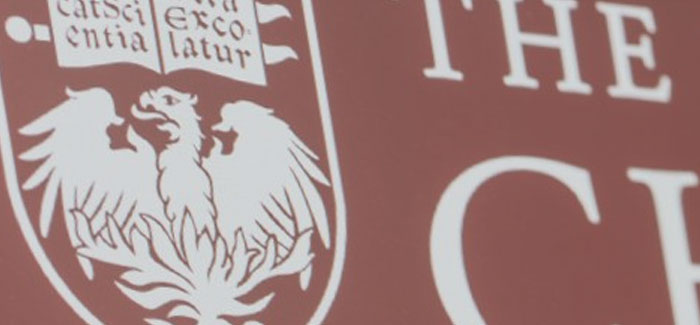
Visual aids
Resident artists keep an eye on social issues.
When the University launched the Arts and Public Life Initiative in 2011 to nurture ambitious new work and spark collaborations between the University and nearby civic and cultural communities, it didn’t have to build from the ground up. The Center for the Study of Race, Politics, and Culture, where 19 social-sciences faculty have appointments, had an established residency program supporting artists whose work emphasizes urban and civic themes.
Arts and Public Life, led by artist and urban planner Theaster Gates, teamed up with the center to enhance its program. “We decided to combine our resources,” says Tracye Matthews, the center’s associate director, “and find artists whose work and whose practices could help us to think about how we engage the larger community of artists in the city with the University.” The resident artists get access to the University’s resources—both material and intellectual—and in turn offer “their ways of creating knowledge in art that can help us think more broadly about the way we … do our intellectual work here at the University.”
In the pilot year of the partnership, the center hosted three resident artists who work in—and on—Chicago. Chicago works on them too, its people and problems driving much of their work. Faheem Majeed, Cathy Alva Mooses, and Eliza Myrie showed their work in the Logan Center for the Arts this summer, during the building’s preview period, in an exhibition called Local Metrics: Majeed, Mooses, Myrie.
Burroughs’s work—as an artist and as an “institution builder”—remains a touchstone for his practice, says Majeed. “A lot of the materials I’m using,” he points out, “are actual building materials: drywall, two-by-fours, wood. One of the things I’m interested in doing is looking at the boarded-up buildings that Dr. Burroughs would frequent as she moved through the city on the bus, and maybe doing something with the buildings.”
Majeed’s If You Lived Here, You’d Be Home By Now repurposes a sign advertising the Arches at Oakwood Shores, a mixed-income development that replaced the Madden, Wells, and Darrow homes, demolished in the 2000s. “Majeed absconded with the sign before most of these projects broke ground,” writes curator Hamza Walker, AB’88, in the gallery guide, “at a time when plans to revitalize this community were met with deep skepticism.”
Working out of a Pilsen storefront studio, Cathy Alva Mooses marries ancient craft with modern data to connect the life and economy of Mexico’s Otomi people with the urban Hispanic American immigrant experience. Alongside a pre-Columbian papermaking technique, she used census maps from the University Library showing the decreasing Hispanic population in her neighborhood. She employs the papermaking technique, Mooses says, “as an entry into different discussions of immigration and commodification of culture.”
In Mexico City and then the remote paper-making village of San Pablito in Mexico’s Puebla region, Mooses researched and then learned to make amate paper, a coarse-fibered paper made from the inner bark of certain trees, whose production dates back to the Aztecs. “There was a very intimate experience of getting housed by a family of papermakers,” Mooses says of her research. “I slept on a wooden board in their house and had the complete experience of being there and working with them. … My sensitivity to material and ability to quickly learn the process was a good way to develop a relationship with them.”
Amate paper was used—and still is in some locales—in religious rituals, gaining sacred value when cut by shamans into patterns and figures. In these books, part of her XI Symmetries, a photograph of the San Pablito papermakers’ work space appears on an interior page. On the preceding pages, which are blank, Mooses has made cutouts that, when laid over the photograph, isolate one of its features. The blank cut pages create “sculptural elements that are growing through the space” and mirror the shamans’ incisions, which, she says, “are meant to symbolize a form of revitalization or a healing.”
“I’m looking all the time,” says Eliza Myrie (right). “I don’t think everyone is looking all the time.” Her pieces in the show continue a project she began in 2009. In the aftermath of 16-year-old Derrion Albert’s murder outside a South Side high school, “basically there was a photo splash of boys and girls across the newspaper”—images that, in Walker’s words, “conformed to a stereotypical idea of dysfunction within the black community.” Myrie manipulates such images to “express some empathy, some ‘you are a specific person to me, you are not every person,’” undoing the effect of how the media uses those images.
In a piece from bright white/bright black, Myrie bound a stack of broadsides featuring a close-up of a teen convicted of Albert’s death on one side and a photo of Albert’s sister on the other. “The goal for me is always a conversation,” Myrie says. “A lot of the issues I have with these images in the media that I attach to is that they exist in a periphery.”
